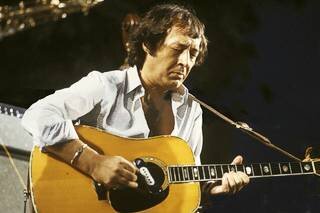Gábor Szabó: Hungary's Cult/Mainstream Guitarist
zita kisgergely
Via Wikipedia Commons By © David Redfern
There aren’t many guitarists that virtuoso Carlos Santana takes cues from, but on that short list, perhaps even near to the top, is Hungarian-born Gábor Szabó. Szabó, while held in great esteem by jazz musicians and learned rock guitarists, never really found his way to the mainstream. Despite this, his influence has been deeply felt throughout the decades since his death in 1982.
Born in Budapest in 1936, he would move to the United States twenty years later due to the Hungarian revolution. There, he studied at Boston’s famous Berklee College of Music. It wasn’t long before he started making a name for himself on the US jazz scene with his style, which is described as ‘moderate avant-gardism.’
His rock influenced style found many fans in the counter-culture and rock community of the 1960s. It was Carlos Santana who first covered Szabó, making his tune “Gypsy Queen” a hit in the States, and in the process winning the Santana a Grammy for Best Rock Instrumental Performance, while reaching number 4 on the Billboard Hot 100 (the song was combined with “Black Magic Woman” by Peter Green). The mix of Hungarian folk, jazz, and Latin rhythms was a staple at Santana concerts.
According to the Budapest Business Journal: “Santana adored Szabó’s work, calling it “fantastic, spellbinding music.” It symbolized for Santana what was happening in the mid-1960s. The Beatles were, as Santana put it, “starting to interject a deeper thought” into pop. By then, Szabó was already experimenting with playing intelligent pop songs like Jefferson Airplane’s “White Rabbit” so, Santana said, “it was all merging without becoming confusion, fusing, all coming together very naturally.” Santana saw Szabó as being on a par with Jimi Hendrix, high praise indeed, especially in his innovative use of feedback. The difference was that, where Hendrix deployed feedback in a wild, psychedelic fashion, Szabó used it like a drone, because he was more into Indian music.”
Szabó first returned to Hungary in 1974, where he played with local jazz luminaries. Unfortunately the guitarist died young, at age 45, in 1982, from internal organ ailments. If there is any consolation here, it is that he died back home, in Budapest.
But the musician’s influence is still felt. For instance, the Hungarian Jazz Association honoured Szabó by naming a prize after him. In terms of all-time great jazz guitarists, Discovermusic.com has Szabó listed as the 14th greatest.
Below is Gábor Szabó’s peppy, “Gypsy Queen”. While informed by his American schooling, we think the Hungarian folk influences are easy to spot, and one of the reasons this guitarist and his music are so beloved.
Flatpack Films has many years of experience dedicated to offering expert servicing. It has brought the best of Hungary to countless brands, agencies, and production companies through its unique locations, exceptionally skilled crews, top of the line equipment and technical solutions. Backed by an impeccable track record, Flatpack Films has worked with world-class clients including Samsung, Samsonite, Toyota, Braun, Chivas Regal and many more - bringing their projects to life through a highly bespoke approach.
